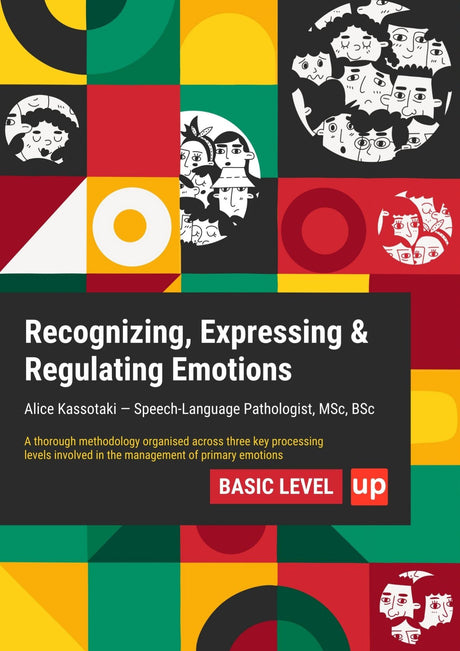Asperger's Syndrome on the Spectrum: Key Symptoms and Treatments
Asperger's Syndrome, a type of Autism Spectrum Disorder (ASD), impacts social interaction and communication skills. If you’re wondering how Asperger’s syndrome on the spectrum fits into the broader context of autism, this article will clarify that along with key symptoms and treatment options. Understanding these aspects can help in recognizing and managing the condition effectively.
Key Takeaways
- Asperger’s Syndrome, a subtype of Autism Spectrum Disorder, is marked by difficulties in social interaction, communication, and repetitive behaviors, often recognized in early childhood.
- Diagnosis of Asperger’s requires a multidisciplinary approach, utilizing tools like the Autism Diagnostic Observation Schedule (ADOS) for accurate assessment and timely interventions.
- Effective management strategies include behavioral interventions, tailored educational support, and medication for comorbid conditions, aiming to enhance social skills and overall quality of life.
Understanding Asperger's Syndrome and the Autism Spectrum

Asperger’s Syndrome is a distinct form of Autism Spectrum Disorder (ASD), characterized by developmental difficulties in social interaction and communication. Despite being incorporated under the broader label of ASD, the term ‘Asperger’s Syndrome’ remains widely used and recognized. This condition is characterized by a distinct set of symptoms, including difficulties in social contexts, obsessive interests, and restricted, repetitive patterns of behavior, which are often associated with pervasive developmental disorders.
Typically, children with Asperger’s Syndrome exhibit these traits from an early age, often showing obsessive interests in specific subjects and struggling with social interactions. Unlike some other forms of ASD, individuals with Asperger’s usually have average or above-average intelligence, which sometimes leads to the classification of Asperger’s as ‘high functioning autism’. It is noteworthy that boys are diagnosed with Asperger’s Syndrome at a significantly higher rate than girls, with a ratio of three to four times more likely.
The causes of Asperger’s Syndrome are rooted in neurobiology, with links to genetics and brain development. Understanding this foundation helps in appreciating the complexity of this condition and the necessity for tailored interventions.
Historical Perspective on Asperger's Syndrome
The story of Asperger’s Syndrome begins in the 1940s with Hans Asperger, an Austrian pediatrician who first described the condition. Asperger observed a group of children who exhibited autistic behaviors but did not have significant learning disabilities. These observations laid the groundwork for what would later be recognized as a distinct condition within the autism spectrum.
It was not until 1992 that Asperger’s Syndrome was officially recognized as a diagnostic term. This recognition was a significant milestone, marking the inclusion of Asperger’s in the broader framework of autism spectrum disorders. In 1994, the term was further solidified in the DSM-4, the Diagnostic and Statistical Manual of Mental Disorders, published by the American Psychiatric Association.
However, the reliance on Hans Asperger’s work has not been without controversy. Asperger’s affiliations and beliefs during the Nazi regime have led some to question the validity and ethical foundations of the diagnosis. Despite these controversies, the clinical observations and diagnostic criteria he introduced continue to influence the understanding and management of Asperger’s Syndrome today.
Key Characteristics of Asperger's Syndrome
Asperger’s Syndrome is marked by a unique set of characteristics that distinguish it from other forms of autism spectrum disorder. These include impairments in social interaction, restricted and repetitive behaviors, and an intense focus on specific subjects. Individuals with Asperger’s often face challenges in emotional, communication, and behavioral skills.
The following subsections explore these key aspects in detail for a comprehensive understanding of the condition.
Social Interaction Challenges
One of the hallmark features of Asperger’s Syndrome is the difficulty in social interactions. Individuals with Asperger’s often display poor social interactions, struggling to understand emotions and exhibiting less facial expressiveness. This can make it challenging for them to relate to others and navigate social situations.
These social challenges are further complicated by unusual speech patterns and a lack of understanding of social cues. People with Asperger’s may have a hard time relating to others socially, often feeling out of sync with their peers. This can lead to feelings of isolation and misunderstanding.
Neurologically, these social impairments are linked to alterations in the mirror neuron system (MNS), which disrupts the ability to imitate and understand others’ actions. This delay in activation of the core circuit for imitation plays a significant role in the social difficulties experienced by individuals with Asperger syndrome.
Repetitive Behaviors and Interests
Repetitive behaviors and intense interests are another defining characteristic of Asperger’s Syndrome. Individuals with Asperger syndrome often exhibit restricted, repetitive behavior and intense interests that can dominate their daily lives. These behaviors, known as ‘stimming’, are stereotyped and repetitive motor behaviors used for self-soothing.
The interests pursued by individuals with Asperger’s are often narrow and deeply focused, sometimes to the exclusion of other activities. These restricted and repetitive behaviors typically become apparent by age five or six. While these intense interests can sometimes be leveraged into specialized skills or careers, they can also interfere with social interactions and adaptability.
Language and Communication Skills
Language and communication skills in individuals with Asperger’s Syndrome can be quite distinctive. Children with Asperger’s may show no significant delays in language development, but they often struggle with the social use of language. Their speech patterns may include unusual tones or rhythms, verbose speech, abrupt transitions, and literal interpretations.
A common challenge is the literal use of language. Individuals with Asperger’s often struggle to understand figurative language, humor, or sarcasm, leading to misunderstandings in social contexts. Moreover, they may exhibit poorly integrated verbal and nonverbal communication, making social interactions even more challenging.
Additionally, these communication difficulties often include poor prosody, tangential speech, marked verbosity, and difficulty detecting listener engagement. These challenges highlight the need for targeted interventions to improve social communication skills in individuals with Asperger’s Syndrome.
Diagnosis and Assessment of Asperger's Syndrome
Diagnosing Asperger’s Syndrome requires a comprehensive and multidisciplinary approach. Early screening for autism can occur as early as 18 to 24 months, using tools like the Modified Checklist for Autism in Toddlers, Revised with Follow-Up (M-CHAT-R/F). These early screenings are crucial for identifying ASD symptoms and initiating timely interventions.
Diagnostic tools such as the Autism Diagnostic Observation Schedule (ADOS) and the Childhood Autism Rating Scale (CARS) are widely used and have high sensitivity and specificity. However, the accuracy of diagnostic outcomes can vary based on the methodologies employed across different studies. Utilizing a multidisciplinary team approach is essential to improve the accuracy and comprehensiveness of the diagnosis.
A thorough assessment for Asperger’s Syndrome includes evaluations by specialists in social and communication skills, as well as comprehensive medical assessments covering physical, psychiatric, hearing, and eye examinations. It is important to note that screening instruments alone are generally not reliable in differentiating Asperger syndrome from other autism spectrum disorders.
Treatment and Management Strategies

Managing Asperger’s Syndrome involves a combination of behavioral interventions, educational and occupational support, and medication for comorbid conditions. Each of these strategies is tailored to the individual needs of the person with Asperger’s, aiming to improve social, communication, and vocational skills.
The following subsections will explore these strategies in detail.
Behavioral Interventions
Behavioral interventions play a crucial role in the treatment of Asperger’s Syndrome. The primary goal of these interventions is to improve social abilities and mitigate communication challenges. Applied Behavior Analysis (ABA) is a widely recognized therapy that focuses on enhancing social skills through structured behavior modification techniques.
Cognitive Behavioral Therapy (CBT) is another effective approach, addressing communication challenges and modifying problematic behaviors associated with Asperger’s Syndrome. These therapies are tailored to individual needs, ensuring that the interventions are relevant and impactful for each person.
Combining these behavioral interventions with other support strategies, including social skills training, can significantly improve the quality of life for individuals with Asperger’s Syndrome, helping them navigate social interactions more effectively.
Educational and Occupational Support
Customized educational plans are essential for promoting the independence of individuals with Asperger’s Syndrome. These plans provide structured learning environments and necessary accommodations, fostering a supportive and conducive atmosphere for learning and development.
Occupational therapy plays a significant role in skill development, helping individuals with Asperger’s Syndrome improve their adaptive skills and manage daily tasks more effectively. Combining tailored educational plans with occupational therapy creates a comprehensive support system that enhances personal growth and independence.
Upbility offers a variety of books and resources that are invaluable for those seeking to understand and support individuals with Asperger's Syndrome. These books cover a wide range of topics, including social skills training, emotional regulation, and communication strategies tailored for children and adults on the autism spectrum. By providing practical insights and exercises, Upbility's materials serve as an excellent resource for educators, therapists, and families aiming to enhance the quality of life for individuals with Asperger's. The resources are designed to be accessible and user-friendly, making them suitable for both professionals and caregivers who are new to the subject. These books not only offer strategies for managing the challenges associated with Asper
Medication for Comorbid Conditions
Medications can be effective for treating comorbid conditions like anxiety and depression in individuals with Asperger’s Syndrome. While these medications do not address the primary symptoms of Asperger’s, they can help manage co-occurring disorders that often accompany the condition.
Selective serotonin reuptake inhibitors (SSRIs) are commonly used to treat symptoms of anxiety and depression, providing relief and improving overall well-being. While medications can help with these comorbid conditions, they are not a standalone solution and should be part of a broader, multidisciplinary treatment plan.
Prognosis and Long-term Outcomes

Individuals with Asperger’s Syndrome generally live normal life spans but often experience higher rates of comorbid mental health issues. While social impairments tend to persist, individuals with Asperger’s often show a more favorable outcome compared to those with lower-functioning autism.
Many adults with Asperger’s Syndrome are capable of successful employment, especially in fields that require less social interaction. Some may even excel in highly specialized careers, such as mathematics or computer science, that align with their strengths. Factors influencing the long-term prognosis include comorbid psychiatric conditions and the level of social impairment.
Early diagnosis and intervention can greatly enhance the long-term outcomes for children with Asperger’s Syndrome. Family support and knowledge of the disorder are also crucial for a favorable prognosis, helping individuals navigate societal pressures and expectations more effectively.
Living with Asperger's Syndrome

Living with Asperger’s Syndrome involves navigating a range of challenges and finding effective coping strategies. Children with Asperger’s may have obsessive routines that interfere with daily life. As they grow older, adolescents with Asperger’s may still face ongoing challenges in self-care, organization, and maintaining social and romantic relationships.
Engaging in recreational activities and leisure pursuits is vital for adults with Asperger’s to cope with daily stressors. Utilizing technology for daily tasks, such as reminders for appointments or grocery deliveries, can help manage routines and reduce anxiety.
Recognizing personal strengths and weaknesses is crucial for developing resilience and effective coping strategies. Education about their condition empowers adults with Asperger’s to advocate for themselves and seek the support they need.
Enhancing Support Systems
Enhancing support systems is essential for improving the quality of life for individuals with Asperger’s Syndrome. Continued support and education for families can greatly enhance the well-being of those affected, providing the resources needed to navigate daily challenges. Positive family environments characterized by high levels of warmth can lead to better behavioral outcomes.
Family psychoeducation programs are designed to provide resources and support that can help mitigate the challenges faced by families of individuals with Asperger’s Syndrome. These programs include knowledge-based training and parent-mediated interventions, which are crucial for enhancing parental involvement and fostering a supportive home environment.
Community-based interventions and support groups can significantly improve the resilience and well-being of families managing Asperger’s Syndrome. Multi-family group psychoeducation programs have shown promise in reducing family stress and improving relationships between parents and their children with Asperger’s Syndrome. Greater community and family support can have a significant impact on the overall quality of life for individuals with Asperger’s Syndrome.
Summary
In summary, Asperger’s Syndrome, a form of Autism Spectrum Disorder, presents unique challenges and opportunities for those affected. Understanding its key characteristics, such as social interaction difficulties, repetitive behaviors, and distinct communication skills, is crucial for effective diagnosis and treatment. Early screening and comprehensive assessments play a vital role in identifying the condition and initiating timely interventions.
Effective management strategies include behavioral interventions, educational and occupational support, and medication for comorbid conditions. Long-term outcomes are influenced by early diagnosis, family support, and individual strengths. Enhancing support systems through family education and community-based interventions can significantly improve the quality of life for individuals with Asperger’s Syndrome. By fostering a supportive and understanding environment, we can help individuals with Asperger’s Syndrome lead fulfilling and successful lives.
Frequently Asked Questions
What are the key characteristics of Asperger's Syndrome?
Asperger's Syndrome is characterized by challenges in social interactions, restricted and repetitive behaviors, and unique communication skills. Individuals may exhibit obsessive interests and struggle with interpreting social cues and emotions.
How is Asperger's Syndrome diagnosed?
Asperger's Syndrome is diagnosed through early screening with tools like the M-CHAT-R/F and comprehensive evaluations conducted by a multidisciplinary team. Additionally, assessments using diagnostic tools such as ADOS and CARS are essential for evaluating social and communication skills.
What are the treatment options for Asperger's Syndrome?
The treatment options for Asperger's Syndrome primarily involve behavioral interventions such as ABA and CBT, along with educational and occupational support; medication may also be prescribed for coexisting conditions like anxiety and depression. It is essential to tailor these strategies to meet individual needs.
What is the long-term prognosis for individuals with Asperger's Syndrome?
The long-term prognosis for individuals with Asperger's Syndrome is generally positive, as they can lead normal lives and excel in specialized careers. Early diagnosis and strong family support play vital roles in achieving favorable outcomes.
How can families support individuals with Asperger's Syndrome?
Families can effectively support individuals with Asperger's Syndrome by fostering a positive environment and actively participating in psychoeducation programs. Engaging in community-based interventions further enhances wellness and behavioral outcomes.
Original content from the Upbility writing team. Reproduction of this article, in whole or in part, without attribution to the publisher is prohibited.
References
- American Psychiatric Association. (1994). Diagnostic and Statistical Manual of Mental Disorders, Fourth Edition (DSM-4). Washington, DC.
- Asperger, H. (1944). Autistic psychopathy in childhood. Archive for Psychiatry and Nervous Diseases.
- Autism Diagnostic Observation Schedule (ADOS). A standardized diagnostic tool for assessing autism spectrum disorders.
- Autism Spectrum Disorder (ASD). A neurological disorder characterized by challenges in social interaction and communication.
- Cognitive Behavioral Therapy (CBT). A therapeutic approach for addressing communication challenges in Asperger's Syndrome.
- Diagnostic and Statistical Manual of Mental Disorders (DSM-5). A comprehensive manual for diagnosing mental disorders.
- Hans Asperger's work. The foundational observations and criteria for Asperger's Syndrome.
- National Institute of Mental Health. Resources on autism spectrum disorders and related conditions.
- Selective Serotonin Reuptake Inhibitors (SSRIs). Medications used to manage anxiety and depression in individuals with Asperger's Syndrome.
- Upbility. Publisher of resources for understanding and supporting individuals with Asperger's Syndrome.
- World Health Organization. Guidelines and support for autism spectrum disorders globally.









